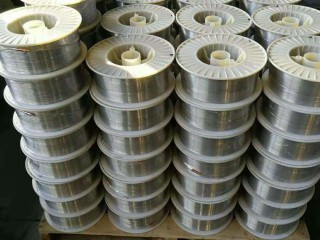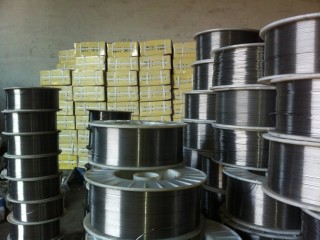- Physical phenomena of titanium processing
The cutting force during titanium alloy processing is only slightly higher than that of steel with the same hardness, but the physical phenomena of processing titanium alloy are much more complex than processing steel, which makes titanium alloy processing face enormous difficulties.
Most titanium alloys have very low thermal conductivity, only 1/7 of steel and 1/16 of aluminum. Therefore, the heat generated during the cutting process of titanium alloys will not be quickly transferred to the workpiece or carried away by the chips, but will accumulate in the cutting area, and the temperature generated can be as high as 1000 ℃ or above, causing the cutting edge of the tool to wear, crack, and form chip deposits quickly. The rapidly worn cutting edge also generates more heat in the cutting area, further shortening the tool’s life.
The high temperature generated during the cutting process simultaneously damages the surface integrity of titanium alloy parts, leading to a decrease in geometric accuracy and severe work hardening phenomena that severely reduce their fatigue strength.
The elasticity of titanium alloys may be beneficial for the performance of parts, but during the cutting process, the elastic deformation of the workpiece is an important cause of vibration. Cutting pressure causes the “elastic” workpiece to detach from the tool and rebound, resulting in greater friction between the tool and the workpiece than the cutting action. The friction process also generates heat, exacerbating the poor thermal conductivity of titanium alloys.
When processing thin-walled or ring-shaped parts that are prone to deformation, this problem becomes even more severe. It is not an easy task to process titanium alloy thin-walled parts to the expected dimensional accuracy. As the workpiece material is pushed away by the tool, the local deformation of the thin wall has exceeded the elastic range and plastic deformation occurs, resulting in a significant increase in the material strength and hardness at the cutting point. At this moment, machining at the originally determined cutting speed becomes too high, further causing rapid tool wear.
- Process tips for processing titanium alloys
Based on the understanding of the processing mechanism of titanium alloys and past experience, the main process tips for processing titanium alloys are as follows:
⑴ Use blades with regular angular geometry to reduce cutting force, cutting heat, and workpiece deformation.
⑵ Adhere to a constant feed to avoid hardening of the workpiece. During the cutting process, the tool should always be in the feed state, and the radial cutting amount ae during milling should be 30% of the radius.
⑶ High pressure and high flow cutting fluid is used to ensure the thermal stability of the machining process and prevent surface deformation of the workpiece and tool damage caused by high temperature.
⑷ Adhere to sharp blade edges. Blunt cutting tools are the cause of thermal accumulation and wear, which can easily lead to tool failure.
⑸ Process the titanium alloy in its softest state as much as possible. As the material becomes more difficult to process after quenching, heat treatment increases the strength of the material and adds wear to the blade.
Use a large tool tip arc radius or chamfer to cut in, and try to insert as many cutting edges as possible into the cutting. This can reduce the cutting force and heat at every point, preventing local damage. When milling titanium alloys, the cutting speed has the greatest impact on the tool life VC among various cutting parameters, followed by the radial cutting amount (milling depth) AE.
- Starting from the blade to deal with the difficult problem of titanium processing
The blade groove wear that occurs is the local wear along the cutting depth direction in the back and front, which is often caused by the hardened layer left by the previous processing. The chemical reaction and diffusion between cutting tools and workpiece materials at processing temperatures exceeding 800 ℃ are also one of the causes of groove wear. Due to the accumulation of titanium molecules in front of the blade during the machining process, they are “welded” to the cutting edge under high pressure and high temperature, forming chip lumps. When the debris is peeled off from the blade, the hard alloy coating of the blade is taken away, so special blade materials and geometric shapes are required for titanium alloy processing.
- Tool structure suitable for titanium processing
The focus of titanium alloy processing is heat, and many high-pressure cutting fluids need to be sprayed onto the cutting edge in a timely and accurate manner in order to quickly remove heat. There are milling cutters with unique structures specifically designed for titanium alloy processing on the market.
Some of the text and images on this website are sourced from the internet, and the copyright belongs to the original creator. Please notify us promptly if there is any infringement.


